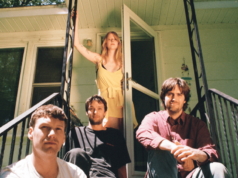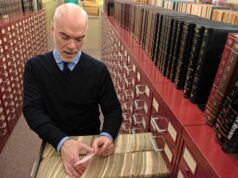
Rosé is not a grape. I can’t tell you how many times I’ve been at a party or restaurant and someone asks me, “Would you like a rosé?” That question is the functional equivalent of “would you like white wine?” The answer to both questions is “yes.” Follow up questions: “What kind of white wine? And a rosé of what?”
Rosé can be made from any red wine grape. Almost all grape juice comes out of the squished grapes clear in color. What makes red wine red, is that the clear juice is left to sit on the red grape skin. The skin gives it the color. The longer you leave it, the darker the color. But when you pull the juice off the skins early, pink! Or more accurately, a cavalcade of colors between practically clear to perfectly pink.
Since spring is when most people’s desire for rosé begins to blossom, I offer you a handful of rosés selected by some of my favorite local wine people.
2020 ‘Lemonade’
Rosé 1: 2020 “Lemonade” rosé by Brianne Day (around $20), from Willamette Valley, Oregon. Selected by Dre Rawlings, chef/owner of the Ashfield Lake House.
Turns out, this wine was supposed to be a full-blown Pinot Noir, but … 2020. Pandemic. Wildfires. Brianne Day committed to making something from the fruit, grown by two women vineyard owners. If she left the juice on the skin too long, the smoke from the wildfires would’ve taken over. Thus, pink … lemonade.
Dre says, “I bought a case of this wine without tasting (I never do that) as I wanted to support Brianne’s decision to ‘make lemonade out of lemons’ in f—ed up 2020. Turns out, it’s delicious. Tart cherry. Creamy, smooth body. Flinty, mineral finish. Just a beauty of a well-balanced rosé. We will be pouring it upon our reopening in May.”
Commanderie de Peyrassol Reserve Templars
Rosé 2: Commanderie de Peyrassol Reserve Templars (around $20), selected by the Bruce Lee of the bottle himself, South Deerfield’s own Master Sommelier, Brahm Callahan.
Callahan says, “As far as a favorite rosé, I drink’em all. That being said, I like the Commanderie de Peyrassol Reserve Templars.” This one is from one of the most revered places in the realm of rosé-Provence, France. Continuing to use organic practices, they’ve been making wines here since the 1200s. And all of the “Commanderie” wines have some long-standing illuminati connection to the Knights Templar. Someday, I’ll write a column just about that!
Domaine Fouquette Cuvée Aurore
Rosé 3: Domaine Fouquette Cuvée Aurore (around $20) by Isabelle Daziano, selected by Chris Gazzara from Charles River Wine Company.
Chris says, “She’s a vigneron independent, meaning she doesn’t sell her grapes to the local co-op for them to add to mass produced wine. There is a lot of pressure to do that but she knows her terroir is special and she makes beautiful wine from it. You’ll find her rosé to have the most beautiful citrus notes. It’s a winner vintage after vintage.”
Vevue Du Vernay
Rosé 4: Vevue Du Vernay (around $12), selected by the chef/owner of The Gypsy Apple Bistro in Shelburne Falls, Sommelier Michaelangelo Wescott.
Chef says, “This awesome sparkling rosé from Beaune in Burgundy, has definitely been my go-to ever since I stumbled upon it last summer. Close your eyes and let this harmonious blend of Cinsault, Syrah, Grenache, and Pinot Noir sing you its story. This sparkling rosé is a crowd pleaser, that has a beautiful salmon hue, along with a pleasant nose of strawberries, raspberries and baking spices with a hint of jasmine. It fills your mouth and soul with tamed bubbles leaving you wanting more. This bottle of joy comes in at under $12. That’s what I said folks: Under $12.”
Pélagiqué Côtes du Rhône Rosé
Rosé 5: Pélagiqué Côtes du Rhône Rosé (around $12). Selected by William Seibert owner of Shelburne Falls Cork, it’s a blend of mostly Grenache Noir and a little Cinsault.
Seibert says, “Since the 16th century the Pélagiqué family have been making estate wines on the same property in the Rhône Valley. As far back as 1908 their wines have been shipped afar to places like Djibouti. Today the winery is still a family business, whose wines are fortunately delivered to Shelburne Falls Cork. It’s salmon color and nose of roses and fresh red fruit compliments the light flavorful dishes we all enjoy this time of year. I would also pair it with your front porch!”
E Prove
Rosé 6: E Prove (about $23), selected by Amy McMahan, owner of Mesa Verde in Greenfield, and an extremely knowledgeable wine afficionda.
“Did I give you a bottle of the Corisican one?” she says. She loves to gift me bottles of what she’s into. This one is a blend of grapes native to the island birthplace of Napoleon Bonaparte. Practically no one has ever heard of the grapes in this one. Niellucciu and Sciaccarellu, which are planted together and then vinified together. If memory serves, this one looked more golden than pink and had more spicy oomph than, say, berry notes.
Masseria Li Veli Primerose
Rosé 12: Masseria Li Veli Primerose (around $12). Your twelfth rosé is my pick, Masseria Li Veli Primerose, from Salento, on the heel of the boot of Italy. This one’s a rosé of Negroamaro. Lots of strawberry flavor. A hint of pepper. It was a little sweet for my liking. But I drank it on my first grown-up getaway with my wife, after getting my second Pfizer shot.
We sipped it at the beach on Plum Island. With wine, sometimes setting makes all the difference. Sweet was good. If nothing, this time of quarantine has taught us to enjoy the sweet things in life. And to stop and smell the rosés.
Ripaille Rosé
Rosé 7: Ripaille Rosé (about $12) from Bruno Lafon, selected by Michael Brunelle corporate wine buyer at Big Y/Table & Vine.
Brunelle says “‘Ripaille’ means feast in French and this wine reminds me of when get-togethers were perhaps taken for granted. It has lovely red fruit notes of strawberry and raspberry and even a little garden herb, like mint and fennel.”
He goes on to quote the woman who taught us both a thing or two about wine, our late Wine Mother, Judy O’Brien — formerly of State Street Fruit Store — who described certain wines like this as having a “backbone of acidity.” Brunelle says it “frames the whole thing, never letting you forget that this is French.”
A combination
Rosés 8-11: selected by Sharon Swihart, wine buyer at Four Seasons Wine & Liquor in Hadley. She has declared herself a “rosé freak.” She says, “In part, because I can no longer digest red wine, but also because of an abiding love for rosés.” She says the timing of this article makes this a tough question because only one wholesaler has hosted a trade tasting of 2020 rosés. Nevertheless, she has four suggestions, both from the current vintage and from last year.
From 2020, she recommends the Paul Buisse Touraine (about $12) from the Loire Valley. A blend of Gamay, Pineau d’Aunis, and Cabernet Franc. She says, “Tasting blind, I would have expected this to cost several dollars more. Far more elegant than any wine should be at such a low price. The total package, for those who like it very dry.”
Next is from The Wine Trust, a Vin de Pays from Chateau St. Nabor-Gris de Nabor (about $12) This one is an organic blend of Tempranillo, Grenache, and Cinsault. Swihart says, “A luscious yet dry fruit salad gives way to a complex mingling of earth, minerals, and a hint of herbs. I expect it will be a best-selling rosé for us.”
From the last vintage, now nearly sold out, she says “Two come to mind that we will be carrying again, because they have been very consistent year to year: Adega Ponte de Lima (about $10), a Vinho Verde from Portugal. Vinho Verde usually comes with some nice soft bubbles. Swihart says, “This was our best-selling rosé last year. Despite being one of our driest rosés, it seems to appeal to all palates.”
Her last pick is the Fleur (about $20) from California’s North Coast. She describes the Fleur as “about as perfect as a rosé can get. It’s ultra smooth, with perfect balance between fruit up front, and the acidity of its finish. There is just a hint of smoke, characteristic of the Pinot Noir grape. Nose and palate mingle to create a wine that is, simply put, extraordinarily pretty.”








